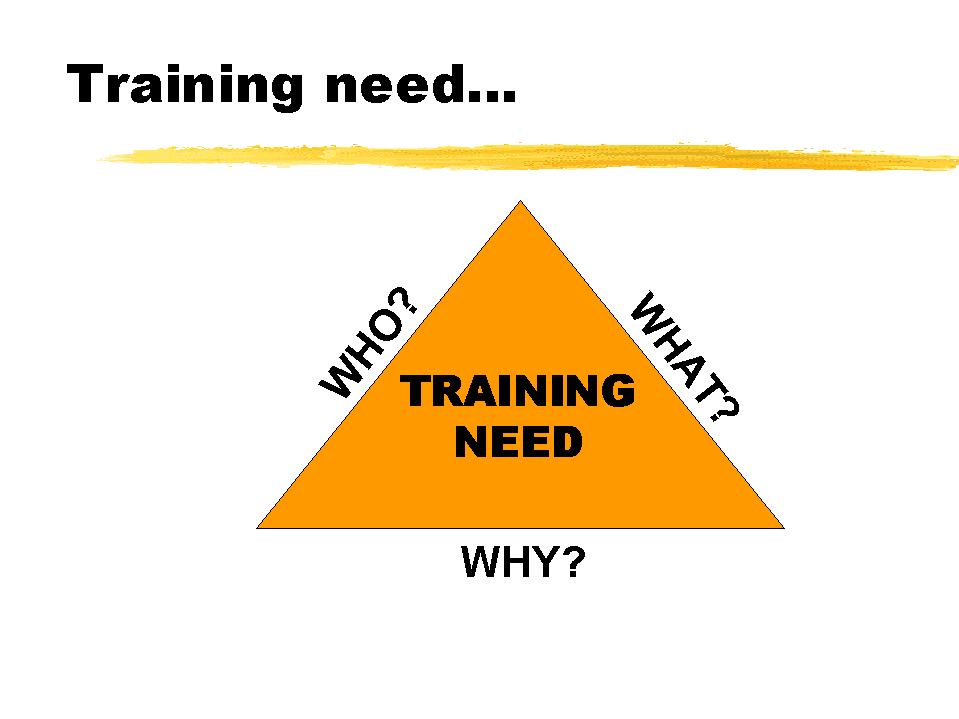

TRAINING NEED: of the organisation. Indicators may be incidents of operator incompetency. Poorly maintained equipment, incorrectly calibrated and damaged machinery are signs of incompetent behaviour which may improve with relevant training. There may be obvious break-downs in communication deserving of attention and training. At a minimum, new employees require an orientation of the workplace which includes a safety element covering emergency and first-aid procedures.
WHY train?: This provides skills and competencies within the human resources of the organisation. Skills and competencies that can assist the organisation achieve its goals in the safest ways possible.
WHO is to receive training?: This is an area deserving of close scrutiny by senior management. Are personnel being considered for training who have indicated they may not be around the organisation for too much longer? Maybe someone is retiring? Too often, quality training is wasted on the wrong people. Training days can be monopolised by senior staff when it is their employees who should be put through the paces of a good training session. Conversely, it may save training funds to ensure a good communicator is put through appropriate training they can then bring back to the workplace and pass on to the rest of the team. Remember, too, that personnel identified for training are usually obliged by industrial relations laws to attend training sessions. To not attend may be considered a breach of contract.
WHAT is to be integrated into the training session?: Are we training personnel to be panel beaters, when in fact we need to train personnel to be better drivers? Do we want to train injury management specialists when we should have training in risk control? As with the other questions, patient consideration is demanded to achieve the best result in fulfilling our training need.
Welcome Page | About Us | Services | Pricing | Book of Triangles | Contact Us | Other Safety Sites